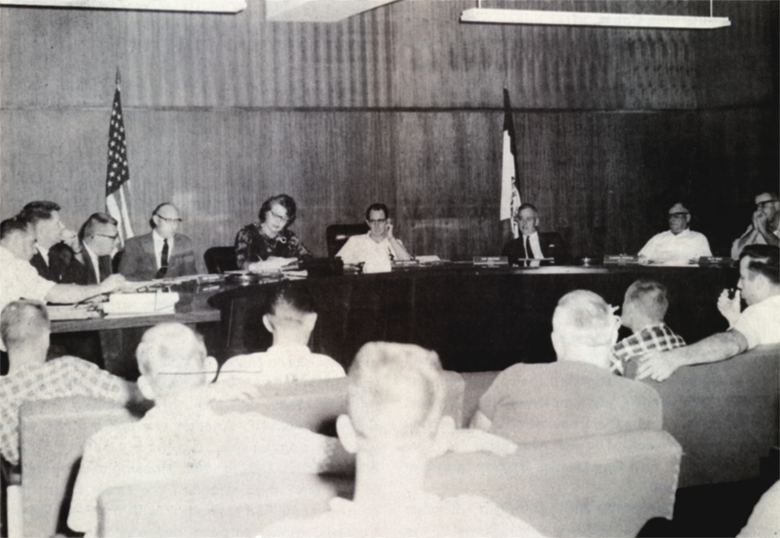
The town’s development was overseen by a succession of mayors and councils, each assuring orderly progress. Murry Witzenburg became mayor on January 1, 1962. The council members for that term were Ralph Grant, Lloyd Gibson, Dwayne Fredregill, Clarence Christian, and Don Grove. Witzenburg was re-elected for a second term beginning in 1964. The council was changed slightly. Its members were James Bianchi, Lloyd Gibson, William Miller, Clarence Christian, and Harry Branscomb. Bianchi resigned in April of 1964 in a dispute over what direction streets should be. He was replaced by Ralph Grant.
Pleasant Hill finally had a town hall in 1963. After the Pleasant Hill School District was attached to Des Moines, the school building was used for one year. The Des Moines school board decided it would be cheaper, easier, and more educational for the children to be bused to regular graded schools. The building was not really usable as a school, anyway, since it was too small.
The Pleasant Hill town council for some years had been considering building a new hall. The clerk’s office was in her home, and the council had its meetings in the school basement. To save the cost (estimated between $150,000 and $200,000) of building a new hall, the council agreed to buy the school for $30,000. The building was still being used as a school in early 1963 when Jim Fredregill built the fire station. After the end of that school year, the entire building was remodeled in two phases.
Harry Branscomb became mayor January 1, 1966. Council members were Cecil Cook, William Roland, Michael Hoffman, Kenneth Wigg, and Ralph Grant. During Branscomb's two years in office, the town continued to expand. Gas lines had been put in by then. There were some inquiries about a new industrial plant north of Vandalia, but it was discovered that the company would need to put in expensive footings to raise the building seventeen feet. In 1967, the sewage plant was completed.